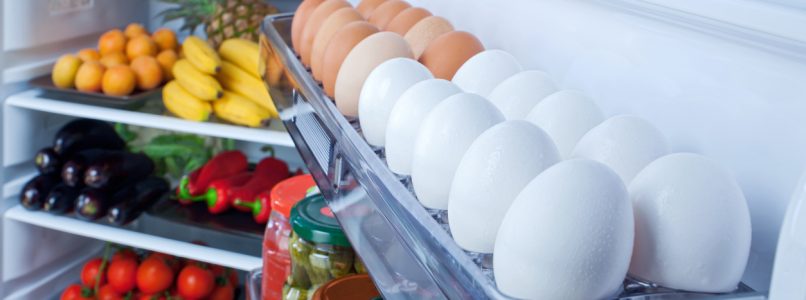Thanks to the freezing of foods, we save time and avoid waste. But not everything can be frozen!
Freezing food is a very convenient method for keep longer foods or dishes that otherwise should be consumed in a short time. Across the freezing process so we have the opportunity to savor our favorite products even out of season, organize dishes to bring to the table even when there is no time to cook, preserve pre-cooked or cooked dishes to avoid deterioration or even waste.
But the practice of freezing food is not so obvious and it is necessary to follow very specific rules so as not to make gross mistakes and even compromise one's health.
First rule: freezing is not the same as freezing
Still many fall into the trap of thinking that these two practices are the same thing. It is not so, they are two different procedures and let's see why.
The freezing of a food is obtained through the home freezer, while the freezing can be done only with professional tools and therefore concerns only industrial foods.
Freezing means reaching a temperature close to -15 ° in a long time (about 24 hours). During this period of time, large ice crystals form and subsequently the breakdown of the cellular structures of frozen food occurs. Hence, once thawed, the product will have a softer and less compact consistency. While with deep freezing, cooling to very low temperatures (even -80 °) takes place in very short times and the ice crystals that are formed are tiny, so much so that once thawed the food maintains the same consistency as the fresh one.
Clarified this important difference, let's see together what are the 10 foods that should not be frozen and why.
Green leafy vegetables
In general, what influences the shelf life of a food is the quantity of water and fat content: the more these two elements are present, the less well preserved a food is.
That's why among the foods that would be better not to freeze we find green leafy vegetables, such as lettuce. The reason? Being rich in water once frozen they lose many of their characteristics and when thawed they are less tasty and above all less fragrant.
Cucumbers, onions and tomatoes
Ditto as for green leafy vegetables. Cucumbers, onions and tomatoes are water-rich vegetables that can't stand freezing. If you need to keep them in the freezer then it is better to cook them first and then store them in special containers.
Potatoes
Keeping them in the freezer does not make much sense since they are a vegetable that, fresh, can be kept for a long time without the need for special precautions. Freezing potatoes, whether raw or cooked, has the disadvantage of making them very pasty once thawed. Always remembering the difference between freezing and freezing, if we really want to have a stock in the freezer then let's buy them directly frozen.
Watermelon, pineapple and melon
As with the vegetables we just mentioned, this type of fruit is particularly rich in water and freezing does not help its taste. And to our palate!
eggs
Here the problem is objective, raw eggs put in the freezer burst. It is therefore impossible to think of freezing them. If, on the other hand, we want to keep boiled eggs in the freezer, it is good to know that once thawed their consistency will be particularly chewy. Better to eat them fresh, don't you think?
Egg-based sauces
The advice not to keep the sauces in the freezer is valid for any type, in particular for those based on eggs. To lose is the consistency, and unfortunately also the taste.
Only fresh fish!
Fish can be frozen as long as it is fresh. Being a very delicate food there is a risk that, while waiting to be frozen, it will be contaminated with bacteria and parasites. In addition, before freezing any type of fish it is good to clean it carefully, removing the bowels and possibly also the scales.
Fried foods
Any fried food, if not consumed immediately after cooking, loses crispness and assumes a soft texture. This happens at room temperature but the same happens if we decide to freeze it and then thaw it. The fried must be eaten immediately, any preservation of it alters its flavor and quality.
Milk and cream
As for eggs, these are also two foods that should be eaten fresh, indeed very fresh, to fully enjoy their flavor and goodness. By freezing them the result will be a product with a grainy consistency, decidedly not very inviting.
Sausages
The meats processed and stuffed through the freezing process lose flavor and consistency. To better preserve them the practice of vacuum.
Finally, the last trick to never forget: thawed foods can no longer be refrozen. Here it really affects your health.





















